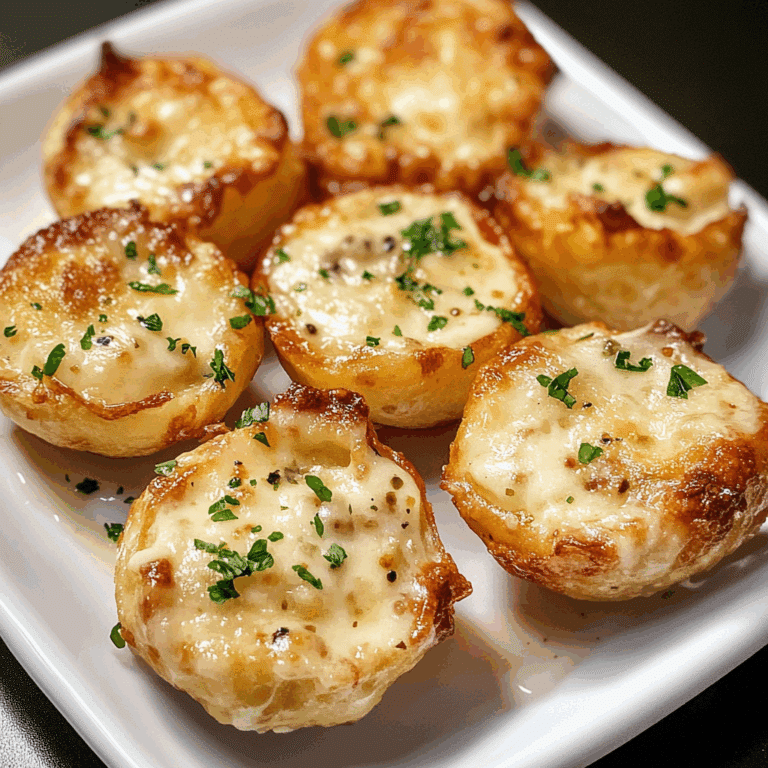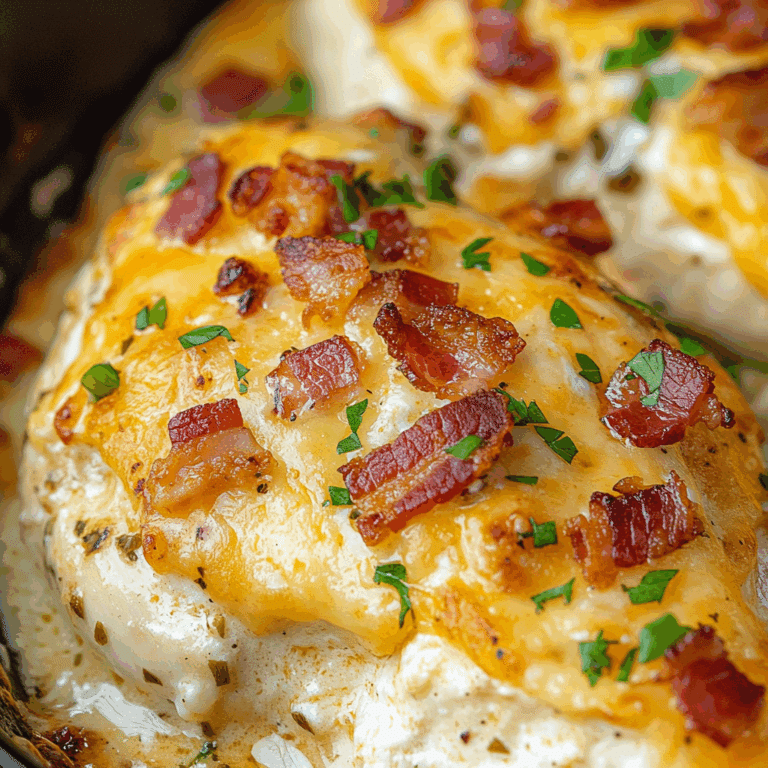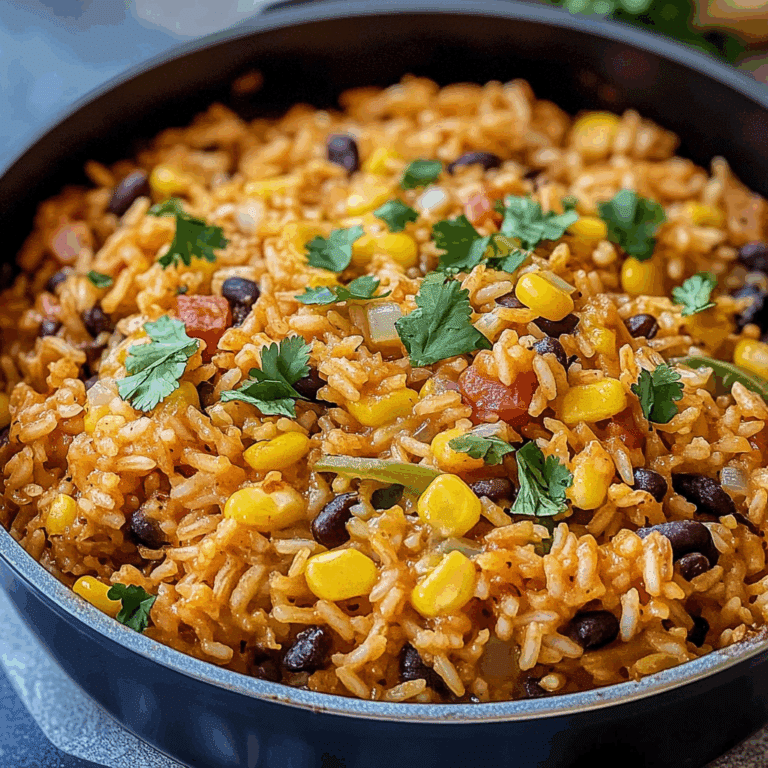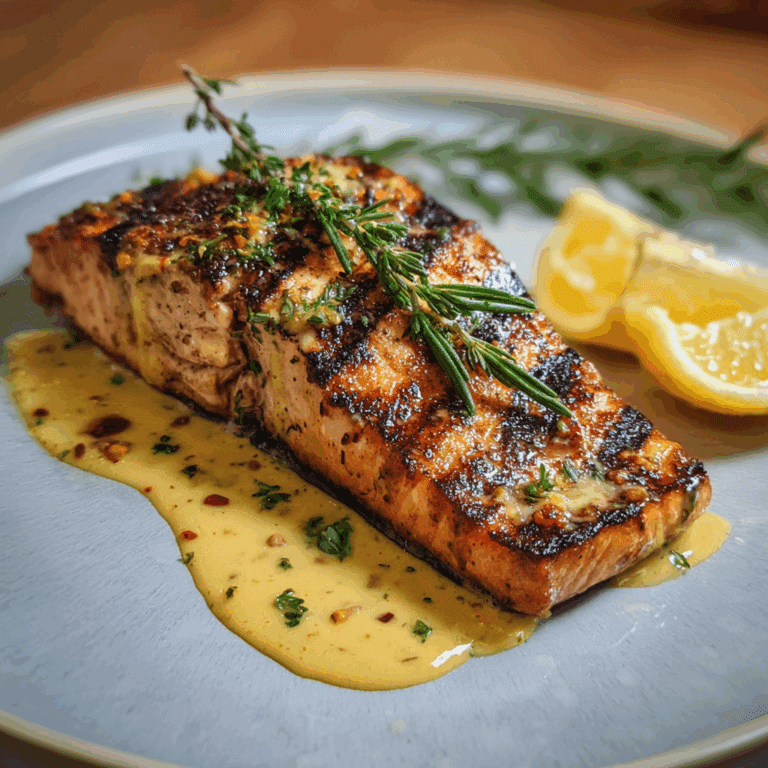How to Cook the Perfect Prime Rib Every Time

Cooking the Perfect Prime Rib is a culinary achievement anyone can enjoy at home with the right guidance. This hearty, flavorful roast boasts a juicy, tender interior with a beautifully crusted exterior that makes it an unforgettable centerpiece for any special occasion. Whether you’re serving friends or family, learning this recipe will let you create a restaurant-quality prime rib that impresses every time.
Why You’ll Love This Recipe
- Unmatched Flavor: The slow roasting technique infuses the meat with rich, mouthwatering flavors that satisfy even the most discerning palates.
- Juicy and Tender: Proper seasoning and cooking preserve the prime rib’s natural juices, resulting in an irresistibly tender cut.
- Impressive Presentation: A golden, crusted exterior paired with perfectly pink meat makes for a stunning dish that wows guests immediately.
- Simple Ingredients: This recipe uses straightforward pantry staples, making it easy to prepare without compromising taste.
- Versatile for Any Occasion: Whether it’s a holiday feast or a celebratory dinner, prime rib fits every vibe and invites sharing.
Ingredients You’ll Need
The secret to the Perfect Prime Rib starts with quality ingredients. Each component is carefully chosen to enhance the roast’s flavor, texture, and appearance while keeping the preparation delightfully simple.
- Prime Rib Roast (Standing Rib Roast): Choose a well-marbled 4 to 6-pound cut for juicy, tender results.
- Sea Salt: Coarse sea salt works wonders in drawing out flavor and creating a savory crust.
- Freshly Ground Black Pepper: Adds a subtle kick and balances the saltiness.
- Garlic Cloves: Fresh garlic enhances the roast with its aromatic punch.
- Fresh Herbs (Rosemary and Thyme): These herbs bring an earthy freshness that complements the beef perfectly.
- Olive Oil or Melted Butter: Helps the seasoning stick and promotes a golden, crispy exterior.
Variations for Perfect Prime Rib
Feel free to tailor this prime rib recipe to your own taste or dietary needs. It’s easy to mix and match flavors or cooking methods to make it uniquely yours without losing that mouthwatering essence.
- Herb-Crusted Twist: Add a blend of dried herbs like oregano, sage, and parsley for a fragrant crust.
- Spicy Kick: Incorporate crushed red pepper flakes or smoked paprika for a subtle heat.
- Mustard Rub: Spread Dijon or whole-grain mustard before seasoning to add tangy depth and help form a crust.
- Low Sodium Option: Reduce salt and compensate with lemon zest and garlic powder for flavor.
- Smoked Prime Rib: Finish cooking in a smoker for additional smoky richness and complexity.

How to Make Perfect Prime Rib
Step 1: Preparing the Roast
Remove the prime rib from the refrigerator at least one hour before cooking to bring it to room temperature. This helps the meat cook evenly throughout, avoiding cold spots.
Step 2: Seasoning
Pat the roast dry with paper towels. Rub olive oil or melted butter all over the surface, then generously coat with sea salt, freshly ground black pepper, crushed garlic, and chopped herbs. Make sure every inch is covered for maximum flavor.
Step 3: Preheat Your Oven
Set your oven to 450°F (230°C) to give the roast an initial blast of high heat. This step sears the outside, locking in juices and creating the delectable crust we all crave.
Step 4: Roasting
Place the prime rib fat-side up on a roasting pan with a rack to ensure even heat circulation. Roast at 450°F for 15-20 minutes, then reduce the temperature to 325°F (160°C). Continue roasting until the internal temperature reaches your desired doneness—about 120°F for rare, 130°F for medium-rare.
Step 5: Resting
Once out of the oven, tent the roast loosely with foil and let it rest for 20-30 minutes. This crucial step allows the juices to redistribute, making every slice juicy and tender.
Step 6: Carving
Use a sharp carving knife to slice the prime rib against the grain for the best texture. Aim for slices about 1/2 inch thick to showcase the beautiful pink center.
Pro Tips for Making Perfect Prime Rib
- Use a Meat Thermometer: Always monitor the internal temperature to achieve your ideal level of doneness.
- Dry Brine in Advance: Season the roast with salt and herbs the night before and leave it uncovered in the fridge for deeper flavor and a drier, crispier crust.
- Let it Rest Properly: Resting after roasting prevents all the precious juices from running out when slicing.
- Choose Quality Meat: Opt for USDA Prime or Choice grade for superior marbling and tenderness.
- Don’t Skip the Initial Sear: High heat at the start locks in moisture and develops flavor.
- Trim Excess Fat Carefully: Leave a thin fat cap but remove thick slabs to avoid flare-ups and excessive grease.
How to Serve Perfect Prime Rib
Garnishes
Fresh sprigs of rosemary and thyme create an inviting aroma. A sprinkle of flaky sea salt adds texture, while horseradish sauce or garlic butter can enhance each slice’s richness.
Side Dishes
Classic accompaniments like creamy mashed potatoes, roasted root vegetables, and Yorkshire pudding pair beautifully, complementing the prime rib’s hearty flavors without overpowering.
Creative Ways to Present
Serve slices fanned out on a wooden cutting board alongside rustic bread or atop a bed of arugula with shaved Parmesan to add color and vibrant contrast.
Make Ahead and Storage
Storing Leftovers
Wrap leftover prime rib tightly in foil or plastic wrap and refrigerate within two hours of cooking. It will stay fresh for up to three days when stored properly.
Freezing
Sliced or whole, frozen prime rib should be securely wrapped in freezer-safe bags or vacuum-sealed to avoid freezer burn. Consume within 2-3 months for best taste.
Reheating
Reheat gently in a low oven (around 250°F/120°C) covered with foil to preserve moisture. Avoid microwaving to keep the texture intact and juicy.
FAQs
What is the best cut for prime rib?
The standing rib roast, which includes ribs six through twelve, is ideal due to its marbling and thickness that ensures tenderness and flavor.
How do I know when the prime rib is done?
Use a meat thermometer to check the internal temperature, aiming for 120°F for rare, 130°F for medium-rare, and 140°F for medium doneness.
Can I cook prime rib in advance?
Yes, you can roast the prime rib ahead of time and gently reheat it before serving, although it’s best enjoyed freshly roasted.
Should I cover the roast while cooking?
Leave the roast uncovered during cooking to develop a beautiful crust; cover only loosely during resting.
What’s the difference between prime rib and ribeye?
Prime rib is a whole rib roast including bone-in portions, while ribeye refers to individual steaks cut from that roast, often boneless.
Final Thoughts
Mastering the Perfect Prime Rib recipe opens the door to unforgettable meals filled with rich flavor and tender satisfaction. With simple ingredients and easy-to-follow steps, you’ll be ready to impress at your next gathering. Give this recipe a try, and watch it become your new favorite way to celebrate delicious moments with those you love.
Related Posts
- How to Make Swordfish Steaks With Peppercorn Butter
- Easy Simple One-Skillet Chicken Alfredo Pasta Recipe
- How to Make Caramelized Onion Pasta Easily
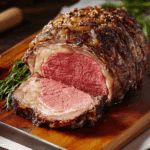
Perfect Prime Rib
- Total Time: About 2 hours including resting time
- Yield: Serves approximately 6-8 people 1x
- Diet: Gluten Free
Description
The Perfect Prime Rib recipe guides you to create a juicy, tender, and flavorful standing rib roast with a beautifully crusted exterior. Ideal for special occasions, this slow-roasted prime rib combines simple pantry ingredients and classic techniques to deliver restaurant-quality results that impress every time.
Ingredients
Primary Ingredients
- 4 to 6-pound Prime Rib Roast (Standing Rib Roast), well-marbled
- Coarse Sea Salt, to taste
- Freshly Ground Black Pepper, to taste
- 4–6 Garlic Cloves, crushed
- Fresh Rosemary, chopped (about 2 tablespoons)
- Fresh Thyme, chopped (about 2 tablespoons)
- Olive Oil or Melted Butter (2-3 tablespoons)
Optional Variations
- Blend of dried herbs: oregano, sage, parsley (1-2 tablespoons each)
- Crushed red pepper flakes or smoked paprika (1 teaspoon)
- Dijon or whole-grain mustard (2 tablespoons)
- Lemon zest and garlic powder (for low sodium option)
Instructions
- Preparing the Roast: Remove the prime rib from the refrigerator at least one hour before cooking to bring it to room temperature. This ensures even cooking and avoids cold spots.
- Seasoning: Pat the roast dry with paper towels. Rub olive oil or melted butter all over the surface. Generously coat the roast with coarse sea salt, freshly ground black pepper, crushed garlic, and chopped rosemary and thyme. Ensure every inch is covered for maximum flavor.
- Preheat Your Oven: Preheat the oven to 450°F (230°C). This initial high heat step sears the outside, locking in juices and forming a delicious crust.
- Roasting: Place the roast fat-side up on a roasting pan fitted with a rack to allow even heat circulation. Roast at 450°F for 15-20 minutes. Then reduce the oven temperature to 325°F (160°C) and continue roasting until the internal temperature reaches your desired doneness: about 120°F for rare, 130°F for medium-rare. Use a meat thermometer for accuracy.
- Resting: Remove the roast from the oven and tent loosely with foil. Let it rest for 20-30 minutes to allow juices to redistribute, ensuring every slice remains juicy and tender.
- Carving: Using a sharp carving knife, slice the prime rib against the grain into approximately 1/2-inch thick slices. This thickness showcases the beautiful pink center and optimal texture.
Notes
- Use a meat thermometer to monitor internal temperature accurately and achieve the ideal doneness.
- For deeper flavor and a crisper crust, dry brine the roast by seasoning with salt and herbs the night before and refrigerate uncovered.
- Allow the roast to rest after cooking to prevent juice loss when slicing.
- Choose USDA Prime or Choice grade meat for superior marbling and tenderness.
- Do not skip the initial high-heat sear to lock in moisture and develop flavor.
- Trim excess fat carefully; leave a thin fat cap while removing thick slabs to avoid flare-ups and too much grease.
- Prep Time: 1 hour (to bring roast to room temperature) plus any dry brining time if applied
- Cook Time: Approximately 1 hour 15 minutes to 1 hour 30 minutes (depending on roast size and desired doneness)
- Category: Main Course
- Method: Roasting
- Cuisine: American
Nutrition
- Serving Size: 6 oz (approximately one slice)
- Calories: 450
- Sugar: 0g
- Sodium: 550mg
- Fat: 35g
- Saturated Fat: 15g
- Unsaturated Fat: 18g
- Trans Fat: 0g
- Carbohydrates: 0g
- Fiber: 0g
- Protein: 32g
- Cholesterol: 120mg
Keywords: prime rib, standing rib roast, roast beef, holiday roast, garlic, rosemary, thyme, juicy roast, tender beef, restaurant-quality, special occasion

